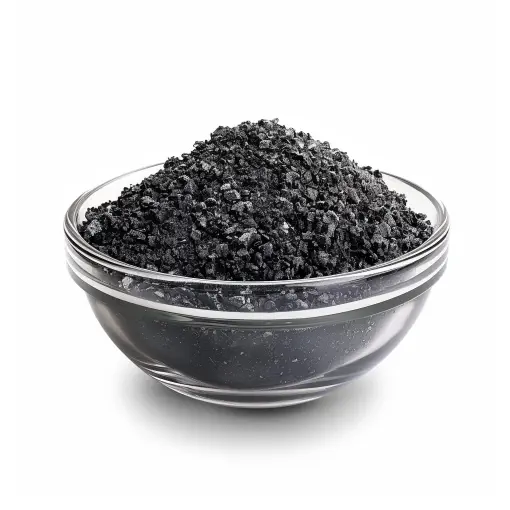Humic acid is a complex mixture of many different acids containing carboxyl and phenolate groups. It is derived from the decomposition of organic matter, primarily plant material, and is a major component of humic substances, which are found in soil, peat, coal, and many upland streams, lakes, and ocean water. Humic acid plays a crucial role in soil health and plant growth.
Characteristics
-
Chemical Composition:
- Humic acid is a mixture of various organic acids, primarily containing carbon, hydrogen, oxygen, nitrogen, and sulfur.
- It has a high molecular weight and complex structure with aromatic rings and aliphatic chains.
-
Physical Properties:
- Appearance: Dark brown to black granular or powder form.
- Solubility: Soluble in alkaline solutions but insoluble in water and most organic solvents.
- pH: Typically slightly acidic to neutral.
-
Functional Groups:
- Contains numerous functional groups such as carboxyl, hydroxyl, phenolic, and quinone groups which contribute to its chemical reactivity.
-
Cation Exchange Capacity (CEC):
- Humic acid has a high cation exchange capacity, allowing it to retain and exchange essential nutrients and minerals in the soil.
-
Bioavailability:
- Enhances the availability of nutrients to plants by chelating minerals and making them more easily absorbable.
Applications
-
Agriculture:
- Soil Conditioner: Improves soil structure, aeration, and water retention, promoting better root development and overall plant health.
- Fertilizer Additive: Enhances the efficiency of fertilizers by improving nutrient uptake and reducing nutrient leaching.
- Plant Growth Stimulant: Stimulates seed germination, root growth, and enhances resistance to environmental stress.
- Compost Enhancer: Accelerates the composting process and improves the quality of compost.
-
Horticulture:
- Potting Mixes: Added to potting soils to enhance nutrient availability and water retention.
- Hydroponics: Used in hydroponic systems to improve nutrient absorption and root health.
-
Environmental Remediation:
- Soil Remediation: Helps in the remediation of contaminated soils by binding heavy metals and organic pollutants, reducing their bioavailability and toxicity.
- Water Treatment: Used in the treatment of industrial effluents and wastewater to remove heavy metals and organic contaminants.
-
Animal Feed:
- Dietary Supplement: Included in animal feed to improve nutrient absorption, gut health, and overall livestock productivity.
- Mycotoxin Binder: Binds mycotoxins in animal feed, reducing their harmful effects on livestock.
-
Construction and Landscaping:
- Erosion Control: Enhances soil stability and reduces erosion in construction and landscaping projects.
- Turf Management: Used in golf courses, sports fields, and lawns to improve soil quality and grass health.
Benefits
-
Improved Soil Health:
- Enhances soil structure, water retention, and microbial activity, leading to healthier and more productive soils.
-
Enhanced Plant Growth:
- Promotes vigorous root growth, increases nutrient uptake, and improves plant resilience to stress.
-
Nutrient Retention:
- Reduces nutrient leaching and enhances the availability of essential minerals and nutrients to plants.
-
Environmental Sustainability:
- Promotes sustainable agricultural practices by reducing the need for chemical fertilizers and improving soil health naturally.
Usage guidelines
-
Application Rate:
- The recommended application rate varies depending on the specific use and soil conditions. Generally, it is applied at rates of 1-5 kg per hectare for agricultural purposes.
-
Methods of Application:
- Soil Application: Can be mixed with soil, applied as a top dressing, or incorporated into compost.
- Foliar Spray: Diluted in water and applied as a foliar spray to enhance nutrient uptake.
- Seed Treatment: Seeds can be soaked in a humic acid solution before planting to improve germination and early growth.
-
Safety and Handling:
- Humic acid is non-toxic and safe to handle. However, it is recommended to wear gloves and a mask to avoid inhalation of dust when handling the powdered form.
Humic acid is an invaluable resource in agriculture and environmental management due to its ability to improve soil health, enhance nutrient availability, and support sustainable practices. Its versatile applications make it a key component in modern agriculture, horticulture, and environmental remediation efforts.
